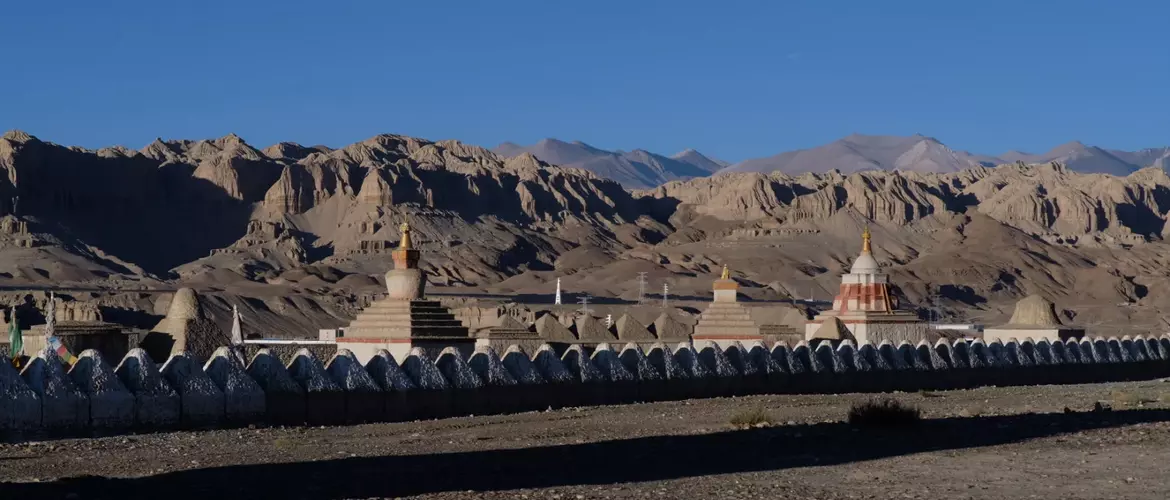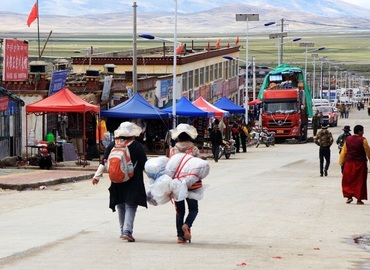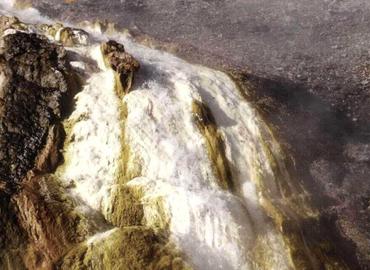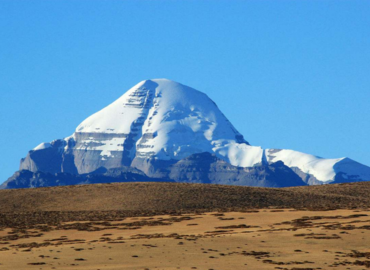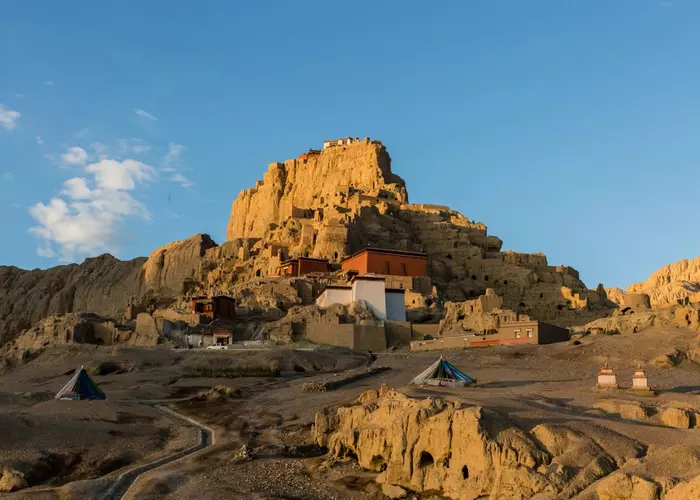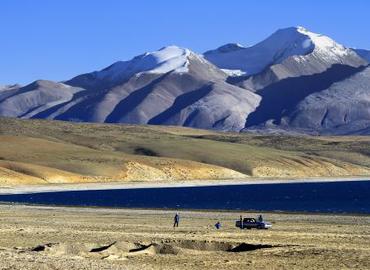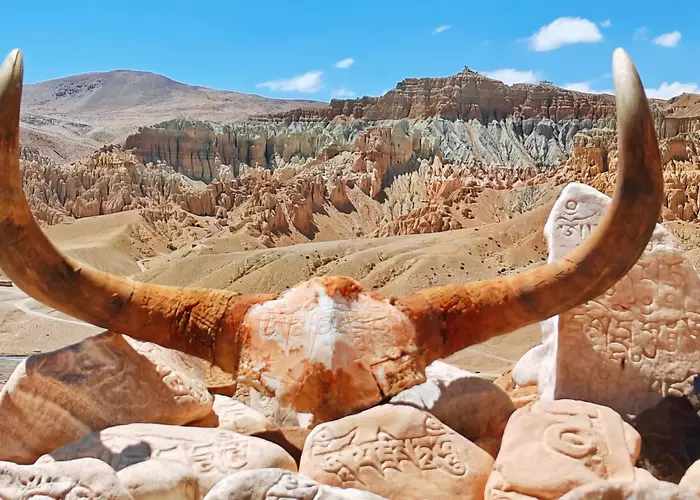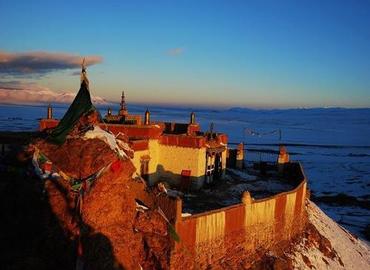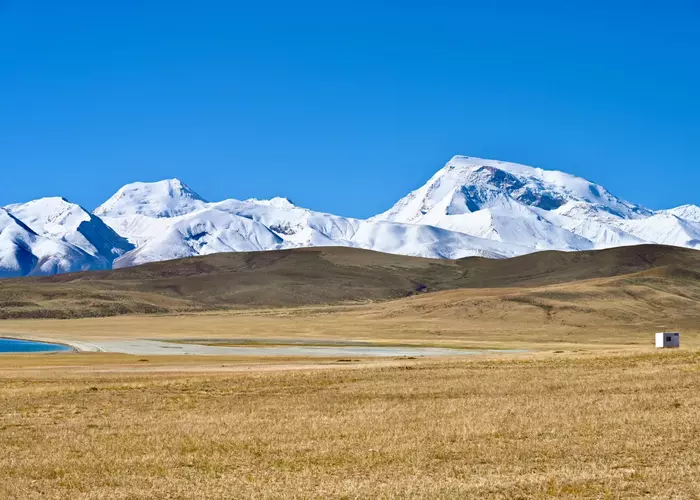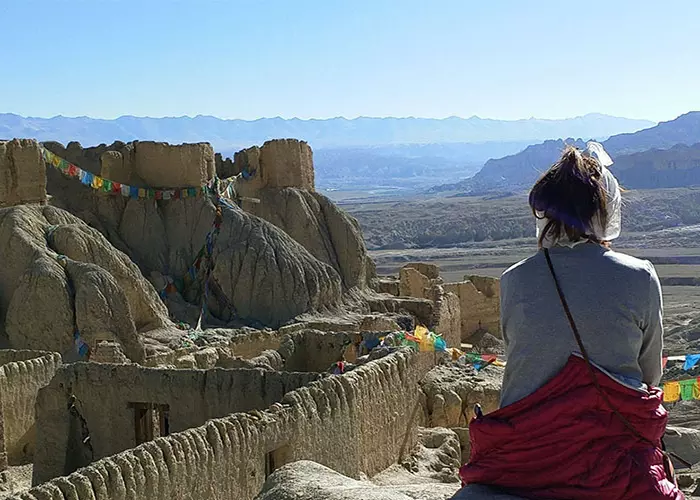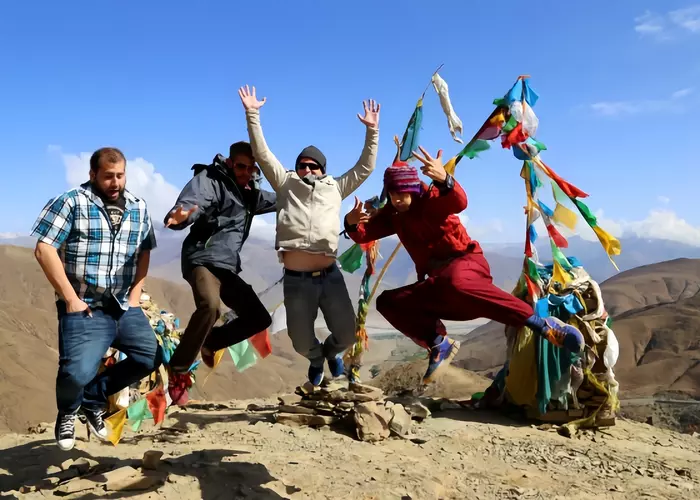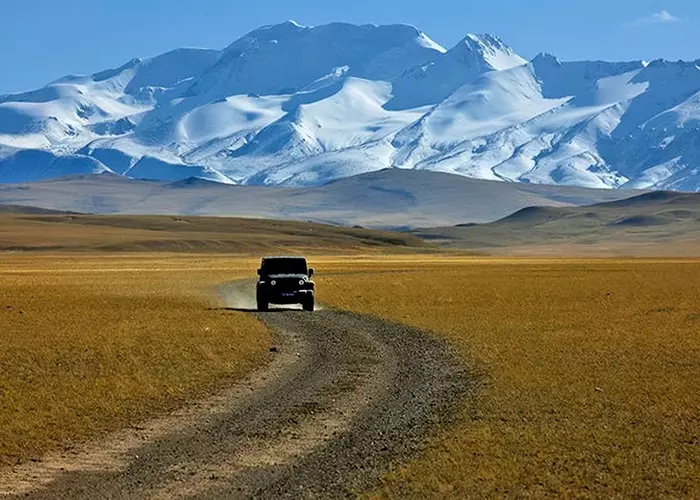Tholing Monastery (托林寺) is the oldest monastery (or gompa) in the Ngari Prefecture of western Tibet. It is situated in Tholing, Zanda County, near the Indian border of Ladakh. Tholing is 12 miles (19 km) east of Tsaparang, which is 163 miles (262 km) from Darchen. It was built in 997 AD by Yeshe-Ö, the second King of the Guge Kingdom. In the Tibetan language, 'Tholing' means "hovering in the sky forever" and is reflected by the monastery's location at an elevation of 12,400 feet (3,800 m). Its architectural layout is designed and built after the Samye Monastery in Shannan, Tibet. After the eminent Bangladeshi monk Atisha entered Tibet in 1036, Guge King expanded the scale of Tholing Monastery, making it the most important monastery for promoting Buddhist culture in the Guge Dynasty. There are many ancient, precious, and well-preserved frescoes.
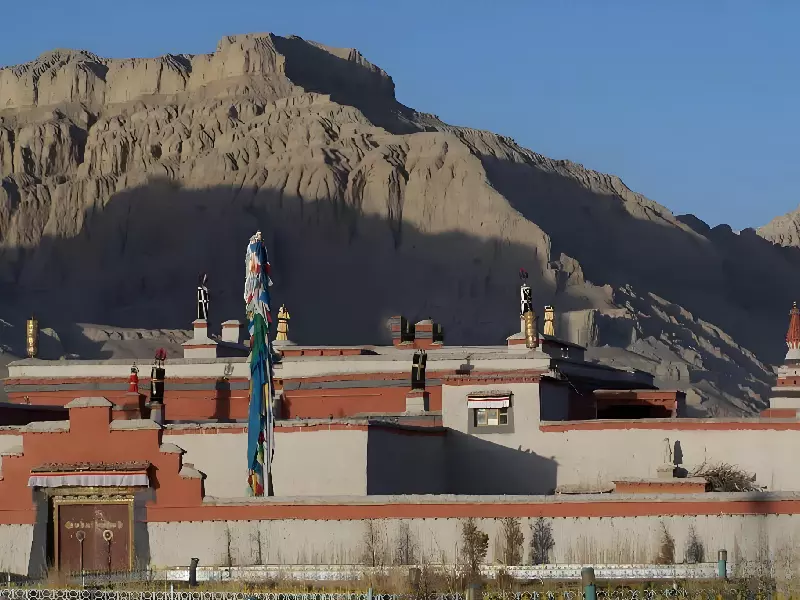
In History
The monastery is one of the first temples built at the start of the "second diffusion" of Buddhism in Tibet. When Guge was founded, it advocated Buddhism. Although Tibetan Buddhism began to revive at that time, it was still in chaos. The second generation of Guge King Yeshe-Ö brought order to the chaos and built Tholing Monastery in 997 AD when Tholing was the capital of Guge.
Later, the eminent Indian monk Atisha was invited to spread Buddhism and made this temple his residence. Atisha led the revival of Tibetan Buddhism, and Tholing Monastery gradually became the center of Tibetan Buddhism at that time. It is said that there are still many relics in the surrounding ruins. The architectural style and murals of Tholing Monastery are obviously directly influenced by Nepal and India. The eminent Indian monk Atisha once lectured, wrote and spread Buddhism here. Since then, many eminent monks have left their footprints here. Because Tholing Monastery is located in the canyon of the earth forest, the red walls and the earth forest complement each other and are unique and magnificent.
In the early days, Tholing Monastery belonged to the Nyingma sect and later converted to the Kagyu sect. In the 15th century, Guge Tripa Ngawangtsaba converted it to the Gelug sect when he was in power. In 1618, he welcomed the fourth Panchen Lobsang Chokyi Gyaltsen to teach the Dharma in Tholing Monastery; in the 17th century, the seventh Dalai Lama Kelsang Gyatso (1708~1757) changed Tholing Monastery into a branch temple under Sera Monastery - Seji Dratsang and sent Chichen Ngawang (1677~1739) to be the Tripa of Tholing Monastery. After that, it became a custom to rotate Tripa and followers (15 people) from Sera Monastery every three years.
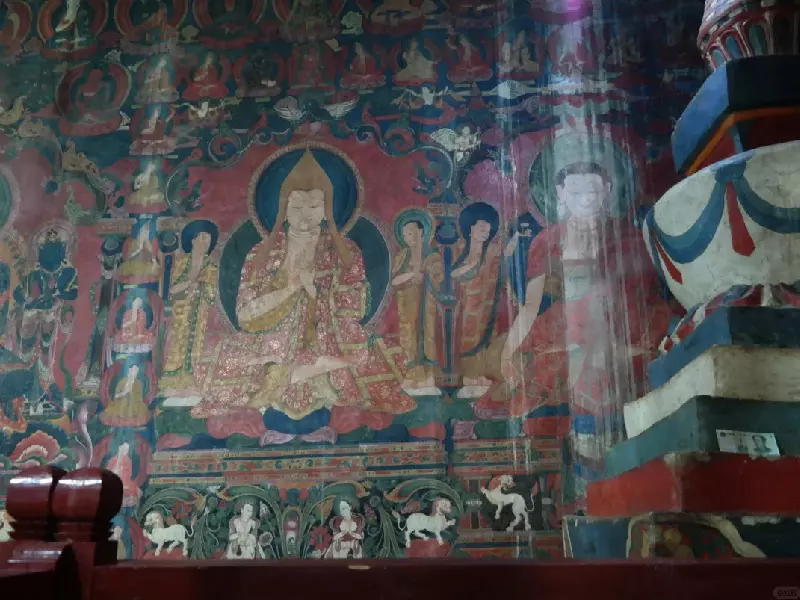
Architectural Layout
The architectural layout of Tholing Monastery is in the shape of a belt, including three parts: the hall, the monk's residence and the pagoda forest. The main buildings are the Ghasa Hall, the White Chapel, the Pagodas, the Arhat Hall, the Maitreya Buddha Hall, the Dharma Protector Hall, the Assembly Hall (Lhakang Hall), Sekang Hall, Atisha Sutra Hall, prayer room, Larang, monks’ residence, etc. It was originally large in scale, but due to natural and man-made destruction, there are only three large Buddhist halls and one pagoda left. The three main halls are Ghasa Hall, Assembly Hall and White Hall. Nowadays, the monastery is mostly in ruins. However, it still retains many images and scores of well-preserved murals that are made in the West Tibetan style.
Ghasa Hall: it is the earliest of the three halls, with a unique shape. The main hall is like a three-dimensional mandala. The square hall in the center symbolizes Mount Sumeru. The four smaller halls on all sides represent the four continents, and the small towers at the four corners represent the four guardians. Unfortunately, the sculptures and murals in the hall were destroyed, leaving only the empty hall.
Assembly Hall: also known as the Lhakang Hall, it is the most complete preserved Buddhist hall. Sit west and face east. It consists of a chanting hall, a Dharma protector hall, a courtyard, a monk's residence, etc., with an area of 588 square meters. There are 36 square pillars, mainly for the bronze statue of the third generation of Buddha.
White Chapel: the door faces south and the plane is slightly rectangular. There are 42 pillars with murals as well as beautifully carved capitals and woodwork. There were originally 15 statues in the hall, and the four walls were painted with exquisite murals. The backlights of the statues and various statues of Buddha and Tara were the most exquisite. It is recommended that you bring a flashlight to enjoy it because the lights in the temple are dim.
Pagoda Forest: it is distributed in the north and northwest of the monastery as two walls, with a total of more than 200 pagodas of all sizes, including a Stupa of Descent from the God Realm with stairs on all sides. Each wall consists of 108 small pagodas. It is said that each tower has a prayer bead of Yeshe-Ö. The sunset shines on this yellow pagoda forest. The scene is so spectacular that it makes people wonder how brilliant the Tholing Monastery was in its prime.
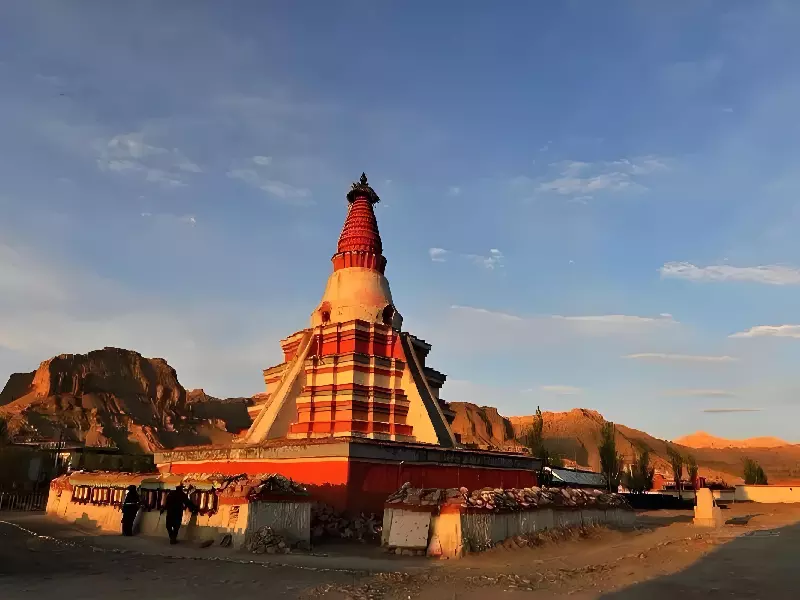
Three Treasures
The first is elk antlers, which are said to have been brought by Atisha from India. Others say they are an elk antler (more than 2 meters long) from the place where Buddha lectured. The second one is the ivory Five Buddha Crown (a crown symbolizing the Five Wisdoms Tathagata), which is said to have been worn by the first Tripa of Tholing Monastery and passed down to later generations. Every Tripa of the monastery wore this crown during Buddhist activities. The third is a large black lava stone, with a clear footprint dented into it, which is an inch deep into the stone. The palm print is very clear. It is said that this is the footprint left by Venerable Atisha.
Conclusion
Tholing Monastery stands as a monumental relic of Tibetan Buddhism's second diffusion and as a powerful reminder of the historical and cultural richness of the Guge Kingdom. Visitors today can still experience its remarkable relics, intricate frescoes, and historic halls that echo the region’s profound reverence for Buddhism.
Lhasa - Shigatse - EBC - Mt.Kailash - Guge Kingdom -Saga - Shigatse - Lhasa
Appreciate the world's highest peak Everest, enjoy a pilgrimage trip to Mt.Kailash, and explore the lost Guge Kingdom.
Lhasa - Shigatse - EBC - Lake Manasarovar - Mt. Kailash - Guge Kingdom - Ali - Gegye – Gertse - Shigatse - Lhasa
Uncover all must-see attractions in central and western Tibet. Get ready to be impressed by its in-depth charm.
Lhasa - Tsetang - Nyingtri - Lhasa - Namtso - Darchen - Mt.Kailash - Saga - EBC - Shigatse - Lhasa
Long adventure to gain insights into views, culture and Tibetan Buddhism of the plateau including a big loop of Nagri.
Email response within 0.5~24 hours.


